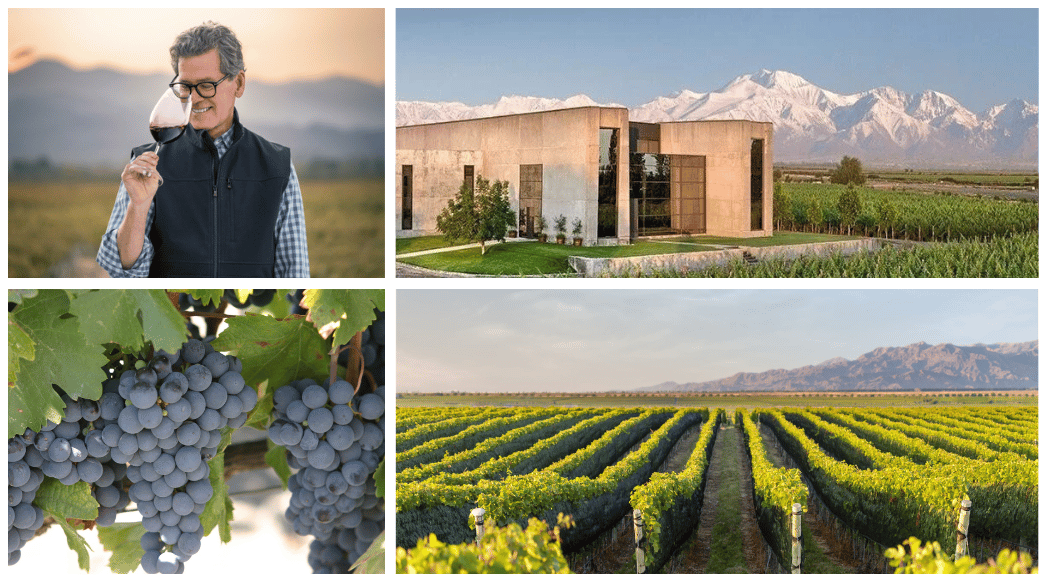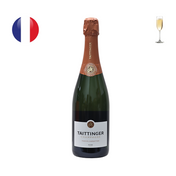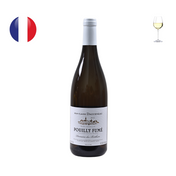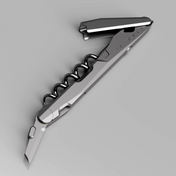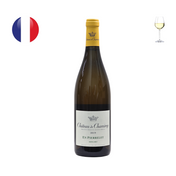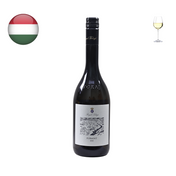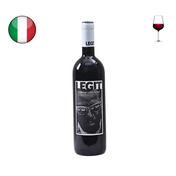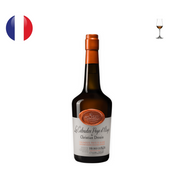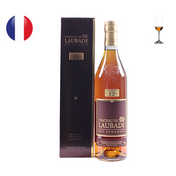The beginning:
Paul Hobbs is one of the most influential winemakers of the last fifty years. His story begins not in a vineyard, but on a large apple farm in upstate New York. He was born one of eleven children in a family that did not drink alcohol. His childhood was filled with hard work on the farm.
His life changed at age sixteen. His father had started growing grapes for local wineries. One winter evening, his father brought home small cups of a golden liquid for the family to taste. Paul's mother thought it was a delicious fruit juice with flavors of apricot and peach. It was actually a 1962 Château d'Yquem, one of the world's greatest sweet wines. For Paul, this was a powerful moment of discovery. His father used this experience to interest him in the family's new grape growing business.
Education: A Change of Path
Although deeply affected by the taste of d'Yquem, Paul initially planned to become a doctor. He studied at the University of Notre Dame and was accepted into medical school. However, his father and a professor who was a former winemaker convinced him to try winemaking instead. In 1975, he went to UC Davis, promising to give it one year. He loved it and earned a master's degree.
Early Career: Learning from the Best
His first job in 1977 was at Robert Mondavi Winery. He started as a lab technician and a researcher. To learn more, he also worked a second shift in the maintenance department to understand winery equipment. He soon moved to work in the wine cellar.
Robert Mondavi was a warm, charismatic, and inclusive leader. He allowed junior staff like Paul to contribute equally in wine tastings, which was a great opportunity.
Paul's scientific skills earned him a spot on the first winemaking team for the new Opus One project in 1979. He later said that being chosen for Opus One is what made him decide to stay in the wine business.
Later, Zelma Long, who had first rejected his job application, hired him to be her winemaker at Simi Winery. Their working styles were very different—hers was instinctual, his was scientific—but their partnership was very important. Together, they hired a young French consultant for his first international job: Michel Rolland. Paul credits Rolland as a brilliant blender from whom he learned a great deal. In 1987, Simi Winery was purchased by the luxury conglomerate LVMH.
Argentina: Starting a Revolution
After Simi was sold, Paul felt restricted by corporate life. In 1988, he was invited to Chile by a former UC Davis classmate, José Ignacio Maturana, to visit wineries like Undurraga and Concha y Toro. Paul made a crucial error by inviting an Argentine acquaintance, Jorge Catena, to join him. Jorge was the son of a famous Argentine viticulturist and was therefore very unwelcome in Chile during Pinochet's rule. This caused a political problem, and Paul was asked to leave the country.
This was actually a setup. Jorge Catena had been sent by his brother, Nicolás Catena, specifically to bring Paul to Argentina. Paul crossed the Andes mountains into Argentina with Jorge.
He visited a winery called Bodegas Esmeralda and found a paradox: the vineyards were beautiful, but the wines were terrible. Argentina had been isolated from modern winemaking technology. Nicolás Catena was an economics professor who had tried for a decade to make world class wine but had failed. Nicolás initially brought Paul in specifically to improve his Chardonnay and Cabernet Sauvignon wines.
Paul's modern methods, like using new oak barrels and controlling fermentation temperatures, were initially met with skepticism from other French consultants already working in Argentina, including Hervé Fabre of Bodegas Fabre Montmayou, who lacked confidence in this new American's approach.
Paul saw the potential. He began secretly consulting for Catena using his vacation time from Simi. When his bosses at LVMH found out, they gave him an ultimatum: stop or be fired. Nicolás Catena had manipulated the situation, and Paul chose freedom. He left Simi to work for Catena full time. The deal was that in return for running Catena's program, Nicolás would help fund the start of Paul's own winery and became an investor.
Paul modernized Catena's vineyards and winemaking. His most important decision was to experiment with the Malbec grape, which was not popular at the time. He made a new style of Malbec from an old vineyard.
Nicolás Catena was resistant to putting his family name on this new, modern wine. An American importer asked for a red wine, but an initial Cabernet Sauvignon failed. Paul believed in his Malbec.
He made a deal with Nicolás: if he could sell 25,000 cases of this new wine within two years, he would get the rights to import the Catena brand. Paul created a new label for the wine called Alamos. US wine critics were stunned by its quality. He beat the sales target, but Nicolás did not honor the deal. Instead, he gave Paul $100,000, took the Catena brand back, and Paul was forced to close his import company. This was a very difficult financial time for his new business.
However, the Alamos project started the Argentine wine revolution and made Malbec famous worldwide. Paul's own Argentine venture, Viña Cobos, was launched in 1998 and was saved when the Argentine government changed its economic policy, causing his costs to drop dramatically.
Building an Empire: The Farmer Winemaker
In 1991, Paul started his own California label, Paul Hobbs Winery, with help from friends and a famous grape grower named Larry Hyde. He began with only 30 tons of fruit and for years did not own a winery or vineyard, working out of shared facilities.
His big break in Napa Valley came from another legendary grower, Andy Beckstoffer. Paul called him to buy Chardonnay grapes. At the end of the call, Beckstoffer mentioned he had just acquired a piece of the famous To Kalon Vineyard and asked if Paul wanted Cabernet grapes from it. Paul's wine from that vineyard later received perfect scores, making his reputation.
Today, the Paul Hobbs empire is global:
Paul Hobbs Winery (California): Founded in 1991. His main winery, known for excellent single vineyard Chardonnay and Cabernet Sauvignon.
CrossBarn (California): His second label, launched after the 2000 vintage, focused on high quality Sonoma County wines.
Viña Cobos (Argentina): Founded in 1998. His Argentine winery, now one of the country's best.
Hillick & Hobbs (New York): Founded in 2014. A project on Lake Seneca in New York State, focused on Riesling grown in shale and slate soils.
Crocus (France): A project in Cahors, France, launched in 2011, focused on Malbec. He was approached for this partnership by Bertrand Vigouroux, who heard of his work from Hervé Fabre, the same French winemaker who had initially doubted him in Argentina.
Yacoubian Hobbs (Armenia): Founded in 2015. This project is a deep exploration of one of the world's oldest wine regions. In partnership with the Yacoubian family, Hobbs works with ancient native varieties like Areni and Voskehat in the high-altitude vineyards of the Vayots Dzor region. The connection felt destined; years earlier, Warren Winiarski had given Hobbs a silver vial containing ancient Armenian grape pips, calling Armenia the "birthplace of wine." This project embodies his endless curiosity for undiscovered terroir.
He has also been a consultant to over 35 wineries around the world. His technical input has been sought in many regions, including Hungary, where he advised on modernizing vineyard practices and winemaking techniques to improve quality, leaving a significant mark on the country's wine industry.
The Man Himself
Despite his global success, Paul Hobbs defines himself first as a farmer. His philosophy is that great wine is made in the vineyard; the winemaker's job is to not ruin it. He is a family man who met his wife at a wine dinner in Brazil. He now travels the world with his two young children.
His story is one of constant curiosity. It is the story of a man who tasted a perfect wine from a small cup and spent his life chasing that feeling, forever changing the world of wine.

